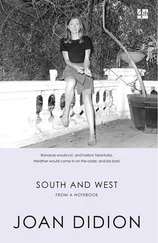1 ...7 8 9 11 12 13 ...35 One way in which grief gets hidden is that death now occurs largely offstage. In the earlier tradition from which Mrs. Post wrote, the act of dying had not yet been professionalized. It did not typically involve hospitals. Women died in childbirth. Children died of fevers. Cancer was untreatable. At the time she undertook her book of etiquette, there would have been few American households untouched by the influenza pandemic of 1918. Death was up close, at home. The average adult was expected to deal competently, and also sensitively, with its aftermath. When someone dies, I was taught growing up in California, you bake a ham. You drop it by the house. You go to the funeral. If the family is Catholic you also go to the rosary but you do not wail or keen or in any other way demand the attention of the family. In the end Emily Post’s 1922 etiquette book turned out to be as acute in its apprehension of this other way of death, and as prescriptive in its treatment of grief, as anything else I read. I will not forget the instinctive wisdom of the friend who, every day for those first few weeks, brought me a quart container of scallion-and-ginger congee from Chinatown. Congee I could eat. Congee was all I could eat.
There was something else I was taught growing up in California. When someone appears to have died you find out for sure by holding a hand mirror to the mouth and nose. If there is no exhaled moisture the person is dead. My mother taught me that. I forgot it the night John died. Is he breathing, the dispatcher had asked me. Just come, I had said.
December 30, 2003.
We had seen Quintana in the sixth-floor ICU at Beth Israel North.
We had noted the numbers on the respirator.
We had held her swollen hand.
We still don’t know which way this is going, one of the ICU doctors had said.
We had come home. The ICU did not reopen after evening rounds until seven so it must have been past eight.
We had discussed whether to go out for dinner or eat in.
I said I would build a fire, we could eat in.
I have no memory of what we meant to eat. I do remember throwing out whatever was on the plates and in the kitchen when I came home from New York Hospital.
You sit down to dinner and life as you know it ends.
In a heartbeat.
Or the absence of one.
During the past months I have spent a great deal of time trying first to keep track of, and, when that failed, to reconstruct, the exact sequence of events that preceded and followed what happened that night. “At a point between Thursday, December 18, 2003, and Monday, December 22, 2003,” one such reconstruction began, “Q complained of ‘feeling terrible,’ flu symptoms, thought she had strep throat.” This reconstruction, which was preceded by the names and telephone numbers of doctors to whom I spoke not only at Beth Israel but at other hospitals in New York and other cities, continued. The heart of it was this: On Monday, December 22, she went with a fever of 103 to the emergency room at Beth Israel North, which had at the time a reputation for being the least-crowded emergency room on the Upper East Side of Manhattan, and was diagnosed with the flu. She was told to stay in bed and drink liquids. No chest X-ray was taken. On December 23 and 24 her fever fluctuated between 102 and 103. She was too ill to come to dinner on Christmas Eve. She and Gerry canceled plans to spend Christmas night and a few days after with his family in Massachusetts.
On Christmas Day, a Thursday, she called in the morning and said she was having trouble breathing. Her breathing sounded shallow, labored. Gerry took her back to the emergency room at Beth Israel North, where X-rays showed a dense infiltrate of pus and bacteria in the lower lobe of her right lung. Her pulse was elevated, 150-plus. She was extremely dehydrated. Her white count was almost zero. She was given Ativan, then Demerol. Her pneumonia, Gerry was told in the emergency room, was “a 5 on a scale of 10, what we used to call ‘walking pneumonia.’” There was “nothing serious” (this may have been what I wanted to hear), but it was nonetheless decided to admit her to a sixth-floor ICU for monitoring.
By the time she reached the ICU that evening she was agitated. She was further sedated, then intubated. Her temperature was now 104-plus. One hundred percent of her oxygen was being supplied by the breathing tube; she was not at that point capable of breathing on her own. Late the next morning, Friday, December 26, it was learned that there was now pneumonia on both lungs, and that this pneumonia was, despite the massive IV administration of azithromycin, gentamicin, clindamycin, and vancomycin, growing. It was also learned — or assumed, since her blood pressure was dropping — that she was entering or had entered septic shock. Gerry was asked to allow two further invasive procedures, first the insertion of an arterial line and then the insertion of a second line that would go close to the heart to deal with the blood pressure problem. She was given neosynephrine to support her blood pressure at 90-plus over 60-plus.
On Saturday, December 27, we were told that she was being given what was then still a new Eli Lilly drug, Xigris, which would continue for ninety-six hours, four days. “This costs twenty thousand dollars,” the nurse said as she changed the IV bag. I watched the fluid drip into one of the many tubes that were then keeping Quintana alive. I looked up Xigris on the Internet. One site said that the survival rate for sepsis patients treated with Xigris was 69 percent, as opposed to 56 percent for patients not treated with Xigris. Another site, a business newsletter, said that Eli Lilly’s “sleeping giant,” Xigris, was “struggling to overcome its problems in the sepsis market.” This seemed in some ways a positive prism through which to view the situation: Quintana was not the child who had been a deliriously happy bride five months before and whose chance of surviving the next day or two could now be calibrated at a point between 56 and 69 percent, she was “the sepsis market,” suggesting that there was still a consumer choice to be made. By Sunday, December 28, it had been possible to imagine that the sepsis market’s “sleeping giant” was kicking in: the pneumonia had not decreased in size, but the neosynephrine supporting her blood pressure was stopped and the blood pressure was holding, at 95 over 40. On Monday, December 29, I was told by a physician’s assistant that after his weekend absence he had come in that morning to find Quintana’s condition “encouraging.” I asked what exactly had encouraged him about her condition when he came in that morning. “She was still alive,” the physician’s assistant said.
On Tuesday, December 30, at 1:02 p.m. (according to the computer), I made these notes in anticipation of a conversation with one more specialist to whom I had placed a call:
Any effect on brain — from oxygen deficit? From high fever? From possible meningitis?
Several doctors have mentioned “not knowing if there is some underlying structure or blockage.” Are they talking about a possible malignancy?
The assumption here is that this infection is bacterial — yet no bacteria has shown up in the cultures — is there any way of knowing it’s not viral?
How does “flu” morph into whole-body infection?
The last question —How does “ flu ” morph into whole-body infection? — was added by John. By December 30 he had seemed fixed on this point. He had asked it many times in the preceding three or four days, of doctors and of physicians’ assistants and of nurses and finally, most desperately, of me, and had never received an answer he found satisfactory. Something in this seemed to defy his understanding. Something in this defied my own understanding, but I was pretending that I could manage it. Here it was:
Читать дальше
Конец ознакомительного отрывка
Купить книгу












